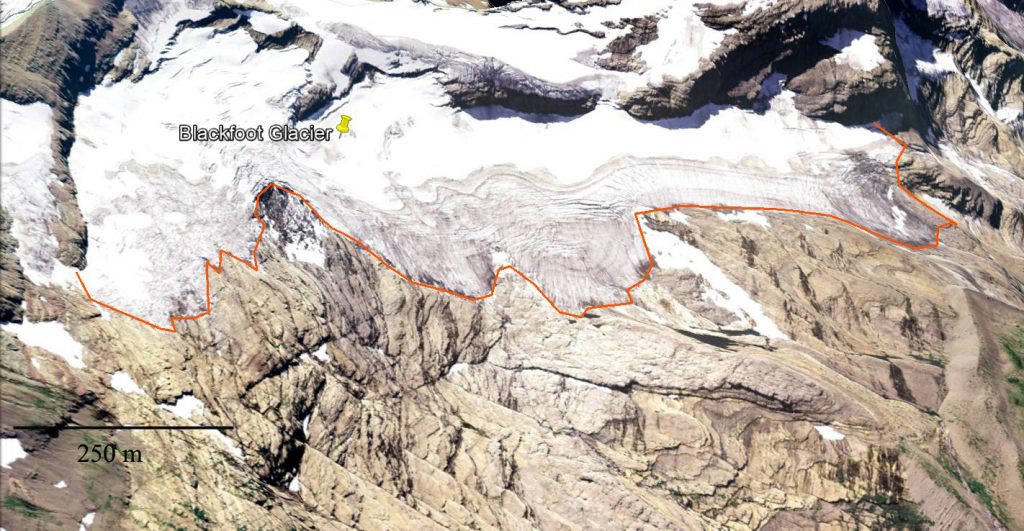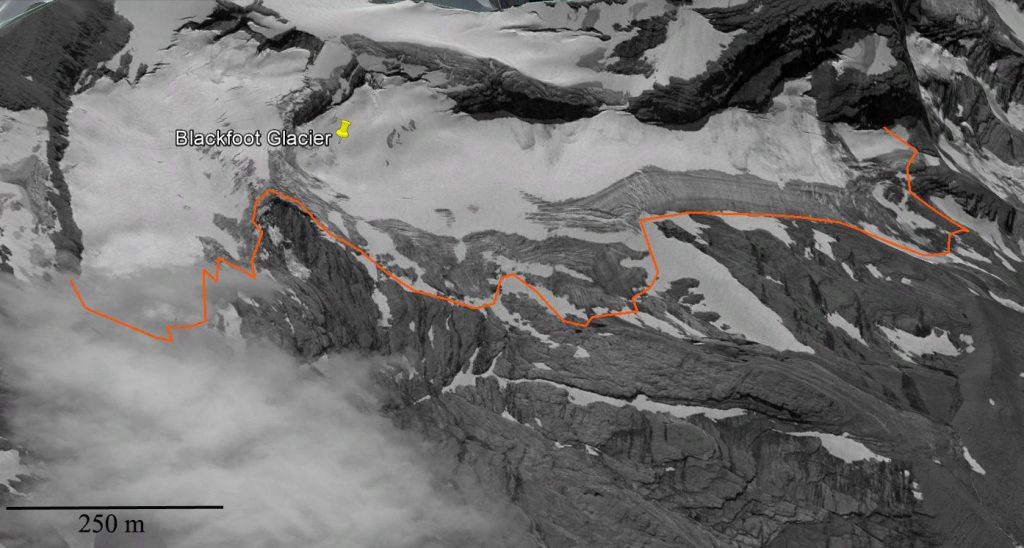August 31, 2017
Blackfoot Glacier, Glacier National Park Slow Recession Indicates Persistence
Posted by Mauri Pelto
Comparison of Blackfoot Glacier in August Landsat images from 1998, 2015 and 2017
Blackfoot Glacier is the second largest glacier in Glacier National Park in Montana. The glacier is on the north side of Mount Blackfoot and is close to two other glaciers Harrison and Jackson. Glacier National Park over the last decade has initiated and maintained an extensive glacier monitoring program led by Dan Fagre. This program has led to consistent mass balance observations on Sperry Glacier, repeat photography and repeat mapping. The repeat mapping indicates the area lost from 1966 to 2015 (Fagre et al, 2017). They identified that all glaciers lost substantial area, with Blackfoot Glacier falling into a small category of seven glaciers that lost less than 20% of their total area in the last 50 years. The glacier currently has an area of 1.5 square kilometers, a reduction of 18% since 1966 (USGS, 2017). NASA (2016) provides a comparison of the glacier in 1984 and 2016. Here we examine Landsat and Google Earth imagery to better understand the slower change observed on this glacier. The area lost to retreat on Blackfoot Glacier is similar to that on Harrison and Rainbow Glacier.
In 1998 glacier volume losses were significant in the region, but in mid-August Blackfoot Glacier was still more than 60 % snowcovered, a significant area of accumulation. In 2005 another year of minimum mass balance in the region the glacier had more than 60% snowcover in mid-August. In 2015 glacier volume losses in the region were again large, with Sperry Glacier having a loss of -1.22 m. Blackfoot Glacier still retained a significant area of accumulation, with more than 60% snowcover. In 2017 the glacier is more than 90% snow covered on 8/12/2017 indicating that the glacier continues to maintain a significant accumulation zone. This indicates the glacier is not as vulnerable to warming and will allow the glacier to continue to persist until 2050 at least. The key to retention of snowpack is high accumulation rates on the glacier, this allows snowpack to persist. Glaciers that lack a persistent accumulation zone, cannot survive current conditions (Pelto, 2010).
Blackfoot Glacier in 2005 Google Earth imagery, with margin in orange.
Blackfoot Glacier in 2015 Google Earth imagery, with 2005 margin in orange. Note the limited retreat in this period.





 Dean of Academic Affairs at Nichols College and Professor of Environmental Science at Nichols College in Massachusetts since 1989. Glaciologist directing the North Cascade Glacier Climate Project since 1984. This project monitors the mass balance and behavior of more glaciers than any other in North America.
Dean of Academic Affairs at Nichols College and Professor of Environmental Science at Nichols College in Massachusetts since 1989. Glaciologist directing the North Cascade Glacier Climate Project since 1984. This project monitors the mass balance and behavior of more glaciers than any other in North America.